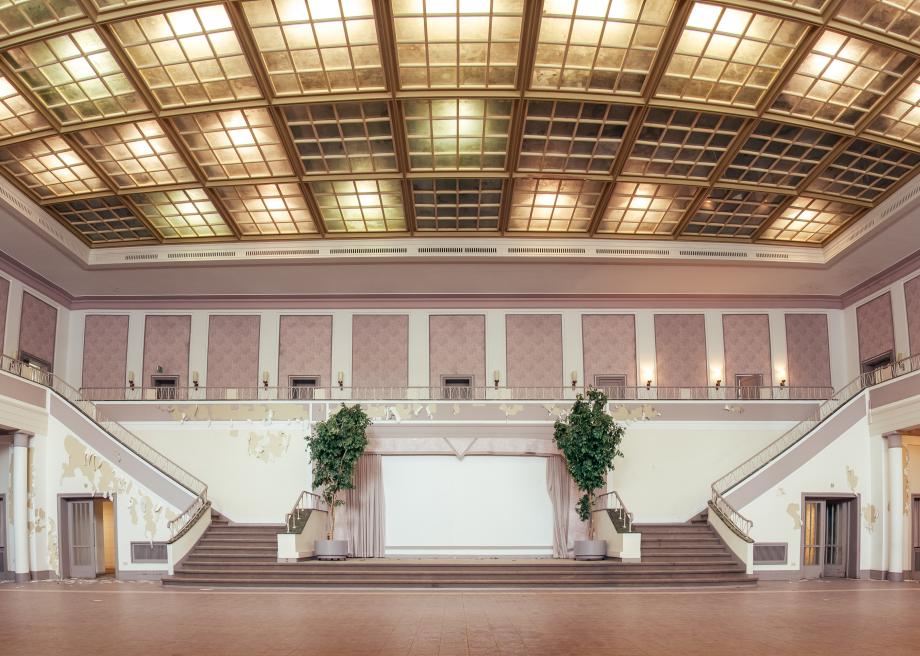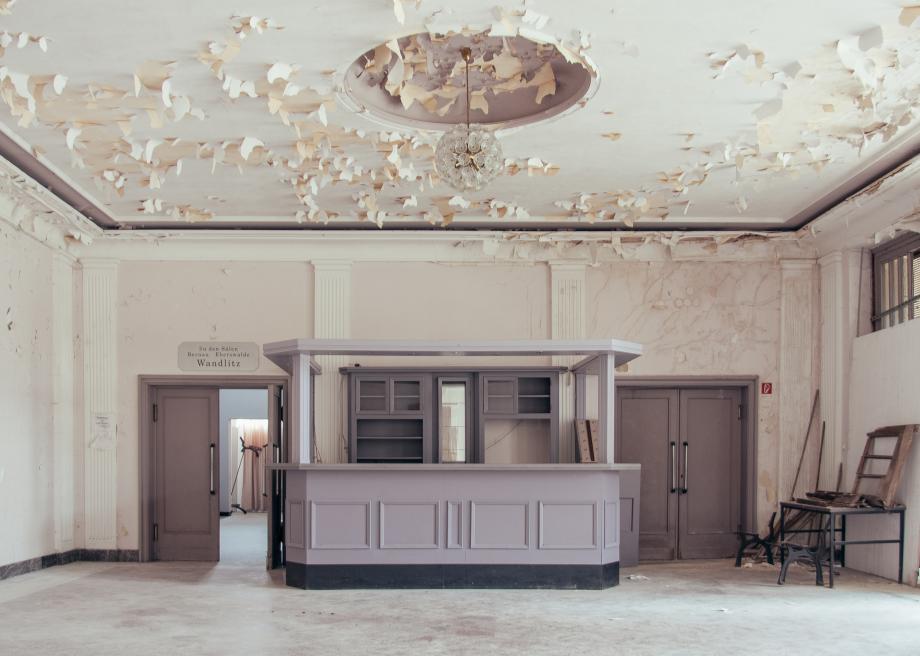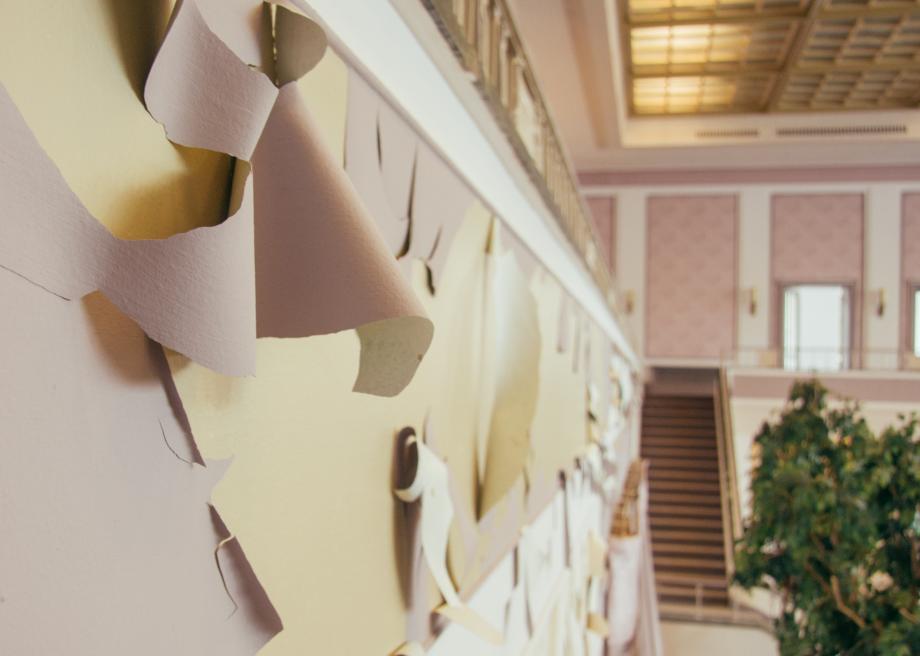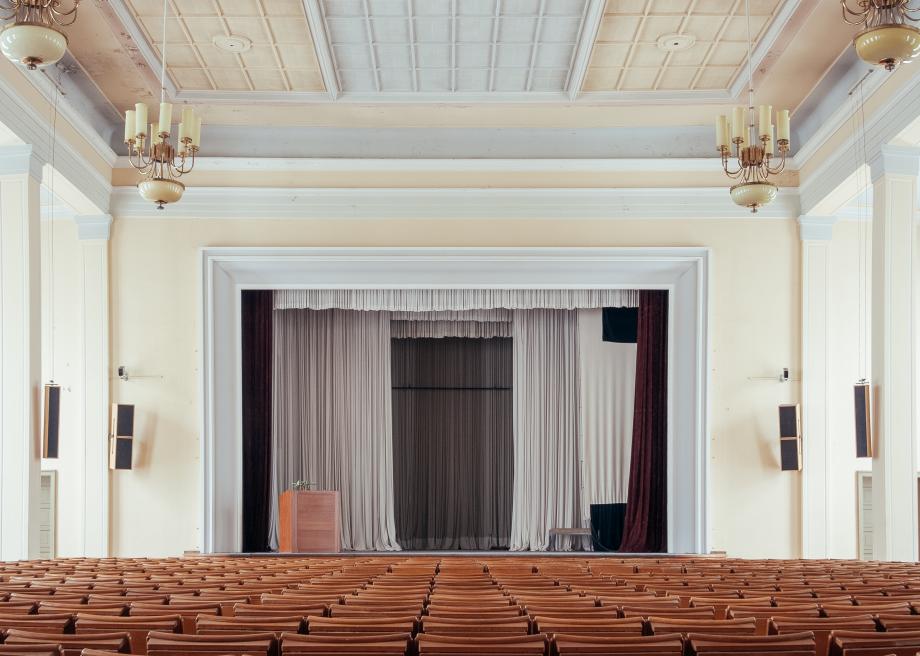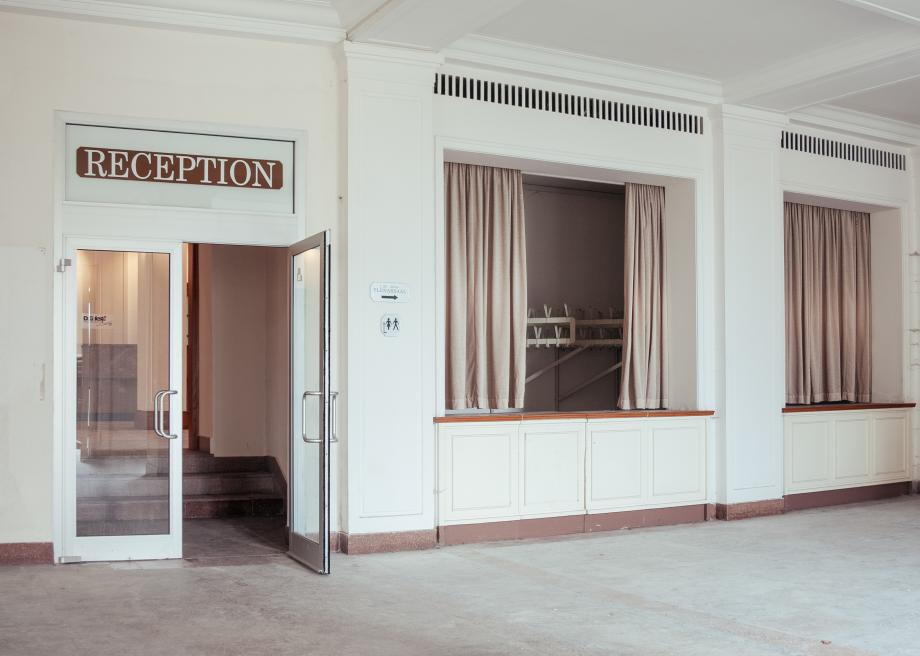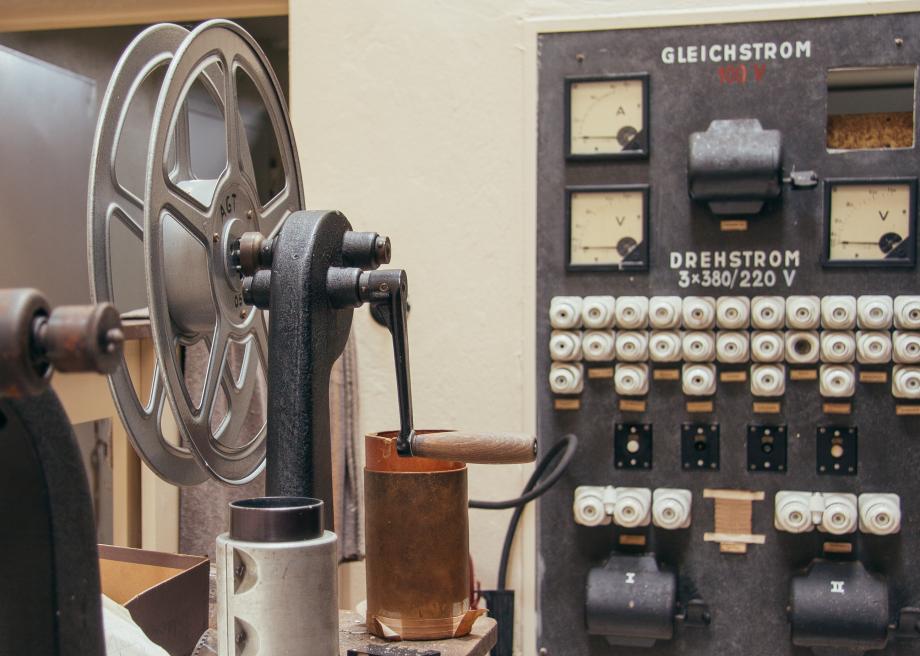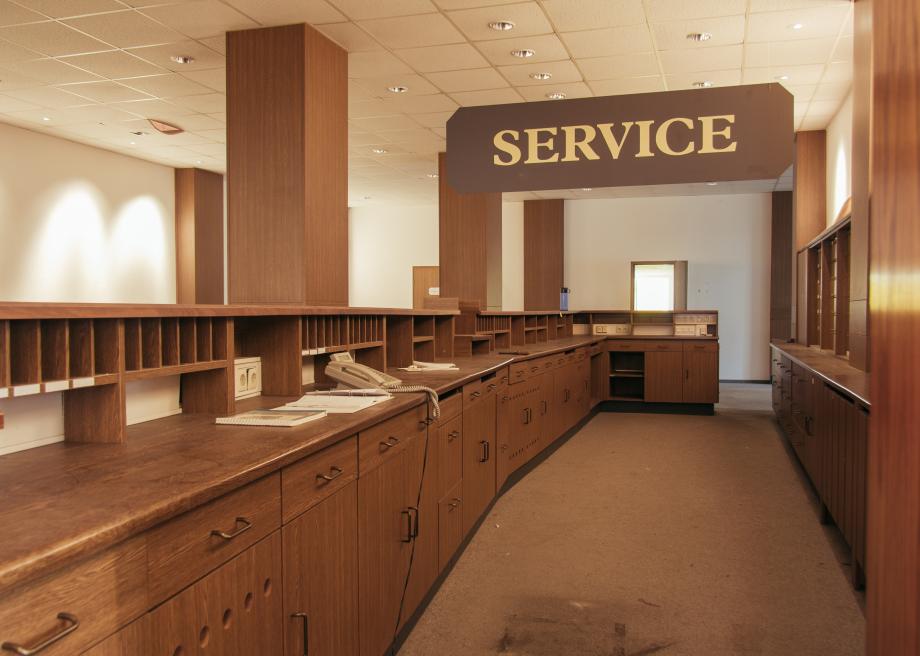A Visit to Germany's Real-Life Grand Budapest Hotel
Atlas Obscura on Slate is a blog about the world's hidden wonders. Like us on Facebook, Tumblr, or follow us on Twitter @atlasobscura.
It turns out the fictitious European town in which The Grand Budapest Hotel was set isn't so fictitious after all. Hidden amidst the Brandenburg forest nine miles north of Berlin are buildings seemingly lost in time and built in such grandiose socialist-classicism style, you wouldn't be surprised if a concierge named Gustave greeted you at the door or a "Boy With Apple" painting adorned the walls. Winding back the clock a few decades to the Cold War era, it was within these very four walls that the German Democratic Republic (GDR) brainwashed young people and officials from all around the world with propaganda about the ideals of socialism and the evils of the capitalist West.
From 1951 to 1990, the FDJ (Freie Deutsche Jugend) youth academy was the top-secret educational facility for the official communist youth movement of the Socialist Unity Party of Germany, occupying a vast 460,000 square feet at Bogensee near Wandlitz. Today, despite being relinquished and left to decay for over two decades, these buildings haven't lost their majestic, otherworldly charms.
Goebbels' Love Nest
In 1936, the city of Berlin gave Nazi Propaganda Minister Joseph Goebbels the Bogensee property and its surrounding terrain, along with a humble log cabin, for his 39th birthday. Three years later, Goebbels built a grand villa there costing 1.5 million Reichsmarks. Otherwise known as his "Liebesnest" ("love nest") where he brought his long succession of affairs, the forest retreat comprised 30 private rooms, 40 day rooms, a bunker, a guest house in which the SS guards stayed, and a cinema where he examined the newest Nazi propaganda films.
Establishment of the FDJ Elite
After the end of World War II, the property was first used as a military hospital by Western allies before it was taken over by the Soviet Military Administration in Germany (SMAD) on March 9, 1946, and the FDJ youth academy was established there. In 1951, Berlin's Stalin Allee architect Hermann Henselmann was entrusted with the construction of a complex of monumental buildings, encompassing conference rooms, interpreter cabins, dance halls, boarding school dormitories and banquet halls — turning the once-private country estate into a small Soviet gingerbread-style town.
Intended to be the source of a socialist stimulus for the world, the institution taught students philosophy, Marxism-Leninism, scientific communism, dialectical materialism and the political economy of capitalism. Liberation organizations across Africa, Latin America and Asia started sending their young members to the academy, and, from the mid-70s, even students from West Germany and Western Europe, delegated by their Communist parties, were enrolled, in the hope that the seeds of socialism would be carried to the West.
The End of the Palace of Red Dreams
The end of the GDR and a divided Germany also meant the end for the elite at Bogensee. By January 1990, the FDJ broke up, by March the last People’s Police guarding the area finally withdrew, and by summer, the last students left the campus. Saying the derelict property has fallen on hard times today is an understatement. Dripping — in the truest sense of the word — with history, the grand hall's roof is leaking, rotten floorboards crunch beneath your feet, and the musty "smell of the East" permeates through the damp peeling walls. In a losing battle against Mother Nature, there’s no longer a guest in sight for poor Gustave to greet, the only patron getting a spin on the old dance floors is tumbleweed and the "lobby boy" holding up the fort today is an old janitor named Robert.
View Bogensee in a larger map

